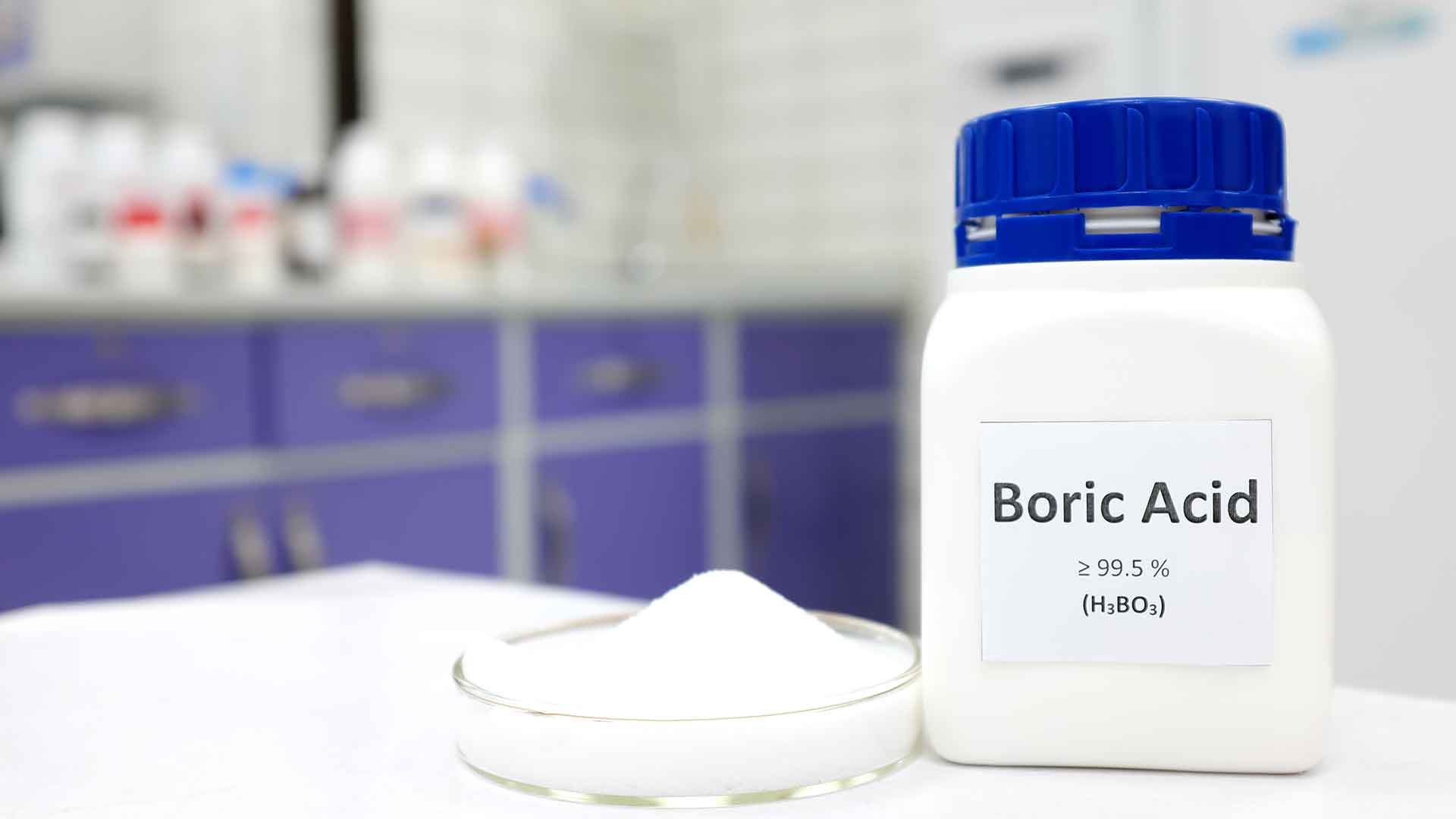Boric Acid

Boric acid is a compound of boron, hydrogen and oxygen. Its formula is BO3H3 or B(OH)3. It is commonly referred to as boracic acid or hydrogen borate. It is found as colorless crystals that dissolve in water. It can also be found as a component of the mineral sassolite.
Insecticide
There are various ways to use boric acid as an insecticide. One popular method involves the use of an instant composition. This composition contains a small amount of boric acid mixed with cloves or sugar. Cockroaches are attracted to the mixture by the sugar and cloves, and the boric acid adheres to their body parts.
Boric acid has long been used as an insecticide. High concentrations of boric acid have been shown to deter German cockroaches and house flies. It is also used to protect wood from termites and wood-boring beetles. However, you should always be cautious while using this substance.
Antifungal
Boric acid is an antifungal that affects bacteria. This substance has an antimicrobial effect on a wide range of organisms, including both prokaryotic and eukaryotic ones. However, boric acid is not effective against all eukaryotes.
This chemical helps to kill fungi by disrupting their growth. Boric acid is an effective treatment for recurrent vaginal yeast infections. It can be applied as a vaginal suppository or taken in capsule form. The CDC recommends using 600 mg per day for two weeks. It is inexpensive and can be purchased over the counter or online.
Antiviral
Boric acid is an antiviral and antiseptic agent. It works by interfering with the life cycle of the yeast, preventing it from becoming infectious. Its antiviral properties make it a useful second-line treatment for yeast infections. However, it should be used only after other antifungal or antiviral agents have failed. Moreover, it should be used only in the case of recurrent infections.
Boric acid is toxic when taken orally. Therefore, pregnant women should not use it. However, boric acid can be safely used as a vaginal suppository. According to the CDC, 600 mg of boric acid daily is recommended. Boric acid can be purchased over-the-counter and online at a low cost.
Poisonous
Boric acid is a common household chemical. It is used in laundry detergents and as a pesticide. However, it is extremely poisonous if swallowed or inhaled in large quantities. It is toxic in doses of 10 to 40 grams. A kilogram is equivalent to 2.2 pounds. To calculate how much boric acid is fatal, researchers use the LD50 value, which is the dose required to kill 50 percent of exposed people.
Boric acid is also toxic for pets. The symptoms of boric acid poisoning in pets are similar to those in humans. Symptoms of toxicity may begin in as little as two hours after the substance is ingested.



